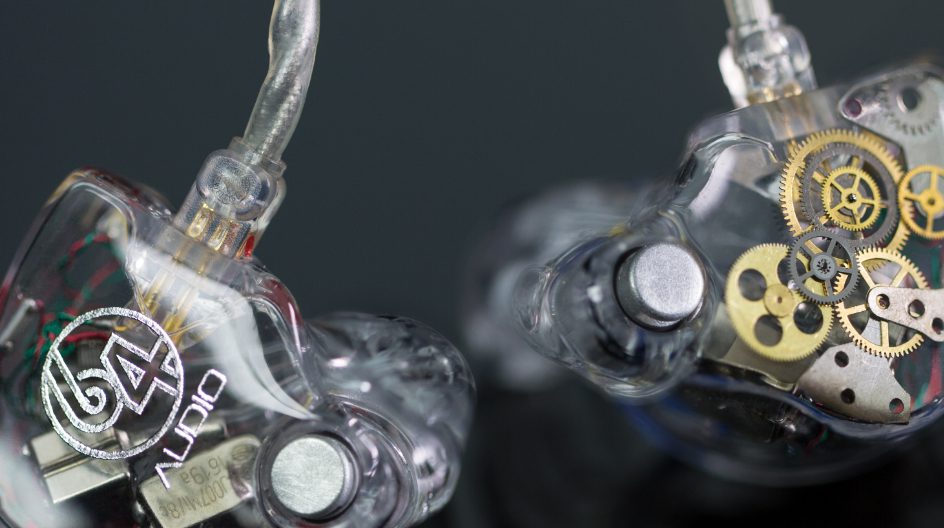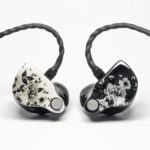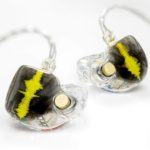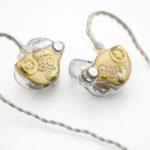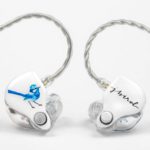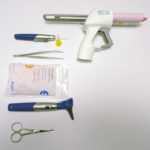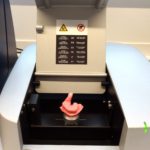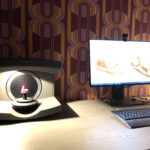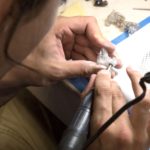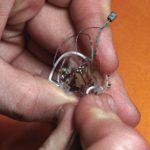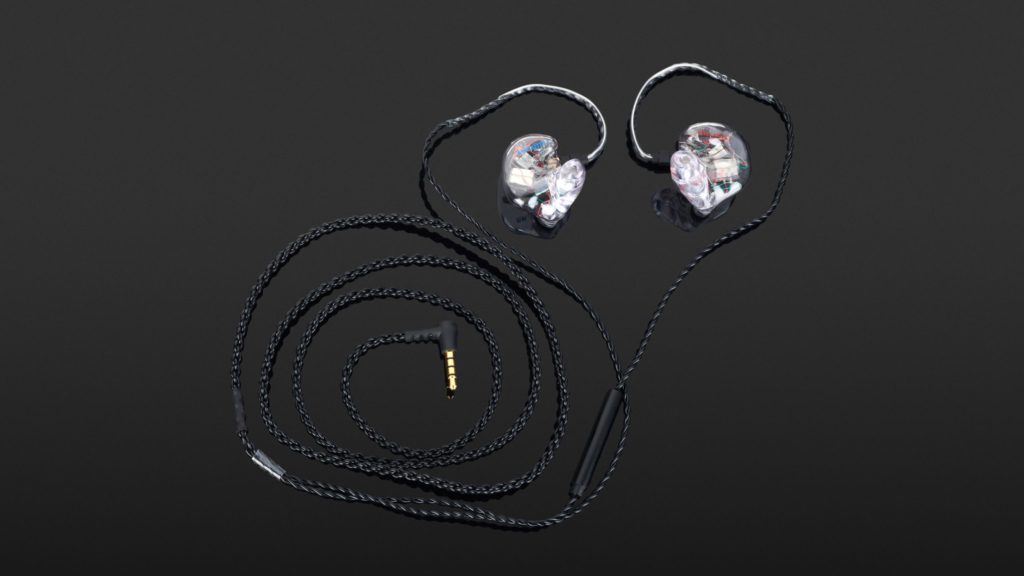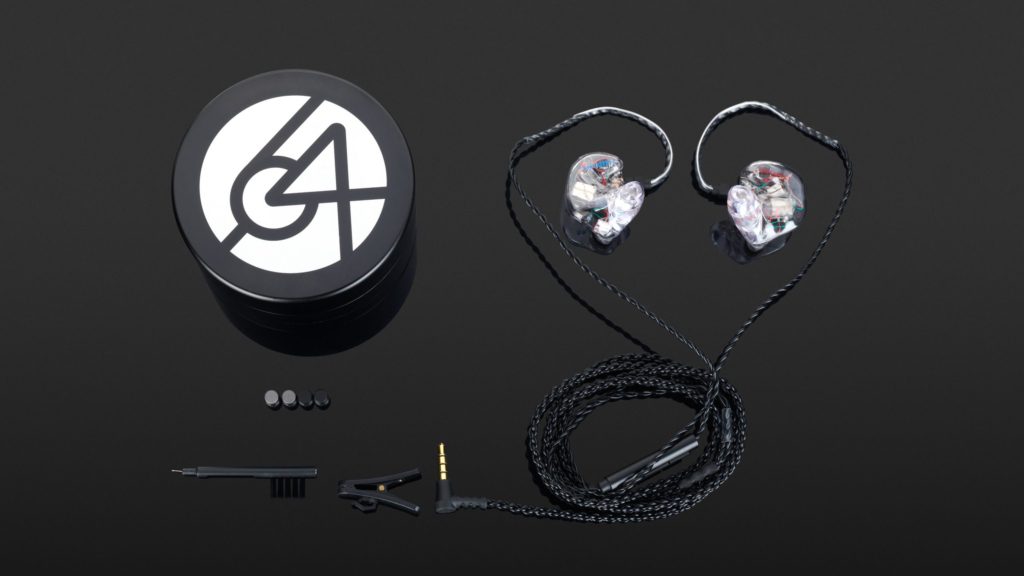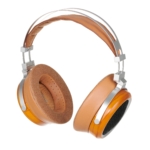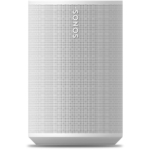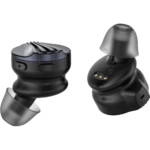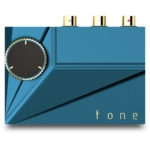High-quality sound, pleasant wearing comfort and all-round excellent quality: the Sivga Luan leaves almost nothing to be desired.
Table of contents
- What are Custom In-Ear Headphones?
- Why is it necessary to have specially fitted in-ear headphones?
- Who are custom-fitted in-ears for?
- Is a custom in-ear monitor worth it?
- How is a custom-made in-ear system created?
- Interview: Kalani Hiramoto, Product Manager, 64 Audio
- The sound of custom in-ears: What does it sound like?
- Summary: The most important purchase reasons
- Self-test: review of the 64 Audio A12t – professional custom in-ear headphones
What are Custom In-Ear Headphones?
Customized in-ear headphones or “custom in-ears” are made-to-measure headphones and therefore fit perfectly in the ear. They therefore achieve the best possible wearing comfort in the field of in-ear products. In addition, there is also a potential increase in sound quality.
Anyone who works regularly and professionally with in-ear systems is likely to appreciate the advantages of a flexible visually customizable design, which is initially aimed primarily at stage musicians. However, the quality of high-end designs also makes the products a real recommendation for sound engineers and audiophile music listeners alike.
Why is it necessary to have specially fitted in-ear headphones?
The fit – the be-all and end-all of in-ears
The sound quality and wearing comfort of in-ear headphones stand and fall with their fit. If you look carefully at your fellow human beings, you will notice that our ears differ significantly in terms of physiognomy – from the pinna to the ear canal. The typical fitting pieces of conventional in-ear headphones deliver quite impressive results in view of these differences, but the perfect fit would be the logical next step, which the professional sound reinforcement market has long since discovered.
Everybody hears differently
It is actually a miracle how two individual membranes, namely our eardrums, can evaluate sound events with such precision and fine resolution. After all, the small eardrum sits several centimeters backwards in our auditory canal – a position that any loudspeaker designer would never dream of due to the funnel effect. In addition, our ear canals are individual, which also affects the acoustics – sometimes narrow, sometimes larger, sometimes twisted and by no means identical in the left and right ear. In addition to wear and tear of the auditory apparatus due to age and stress, it is primarily our brain that transforms the incoming sound into an auditory experience. Experiences, preferences but also talents ultimately lead to the overall impression of hearing. For each of us, this part of the auditory apparatus is a largely fixed quantity and thus all that remains is to make the sound-reproducing part as good as possible.
What could be more obvious than a custom fit?
Who are custom-fitted in-ears for?
Primary target group: live musicians
A number of manufacturers have long since recognized the need for such products and have occupied a niche in the professional headphone market. Among the best-known providers are Ultimate Ears, Sennheiser, Shure and 64 Audio. The primary target group here is professional live musicians. The need for in-ear headphones in this field goes hand in hand with the availability of wireless links and the artists’ desire to be able to move around the stage without hindrance.
In-ear headphones are the appropriate “end piece” and interface to the ear in this context.
While IEMs were less common ten years ago, the abandonment of loud stage monitors is now widespread and efficiently counteracts cacophony on stage and the associated problems. The higher the demands, the more likely a musician is to use higher-quality products and often enough custom products. This way, you always have your personal, perfectly fitting monitor with you.
It is understandable that over-ears are usually undesirable on stage for aesthetic reasons. In addition, custom in-ears score points with their perfect fit on stage when movement is required – from dancers to raging front men. Another plus point is the variable look of custom in-ears: Sometimes it should be as discreet as possible, in other cases it may support the look of the stage outfit.
→ see also our guide: “What are the pros and cons of in-ear and over-ear headphones?”
Custom in-ears: also interesting for other target groups
However, the upscale price segment and optimized fit also make custom in-ears interesting for other professional applications. Thus, the products are a real recommendation for semi-professional and professional producers and sound engineers, especially if they work mobile. While the designs do not fully replace conventional monitors in terms of spatiality and sweet spot variability, they do deliver a precise, consistent sound image at a high level, eliminating room acoustics. The latter is indeed a relevant and often unrecognized problem. Granted: You will hardly experience structure-borne sound with in-ears, but clean low bass. To experience the latter in a home or project studio or even a living room in a linear way is very expensive with conventional speakers.
Perfect, of course, is the combination of several aspects. If you are a live musician producing at home, you kill two birds with one stone with high-quality custom-made products.
The development in this market and the sometimes high demands of musicians on the processing but especially on the sound have led to the fact that audiophile music listeners are also interested in this technology. The professional products can often be used for this purpose in the best possible way. Rarely are there products that explicitly address the audiophile market.
Is a custom in-ear monitor worth it?
With an in-ear, the headphones are “stuck” in the ear canal. It thus creates its own “space” between the drivers and the eardrum. An essential factor here is the fit. It should have become clear by now that a design that is perfectly adapted to the individual shape of one’s own ear also has the chances of providing the best possible wearing comfort.
Universal Fit vs. Custom Fit
However, there are a few things to consider acoustically as well. Conventional headphones, known as universal fits, choose a universal housing shape that must fit every ear. The choice is extensive, ranging from simple geometric shapes to types that take into account the physiognomy of the human auditory system, but only in averaged form. This could well be compared to shoes. There are simple models, expensive ones with high wearing comfort and there are the custom-made ones.
However, headphones are not a piece of clothing. Rather, they perform several functions that contribute significantly to the final listening result. Primarily, it provides a home for the drivers that reproduce the music. The drivers radiate into said “space” and thus induce a movement of the eardrum. Of course, these drivers sit in an enclosure. Unlike any loudspeaker, however, this enclosure also represents the “back wall” of the room itself. If the fit is not right, then the room acoustics themselves will also be altered and thus actually incalculable.
How is a custom-made in-ear system created?
As an example, we would like to introduce you to the creation process of a high-quality custom in-ear system. We chose the US manufacturer 64 Audio (see reviews), a family-run company that is firmly anchored in the professional and audiophile market. Here, up to 18 balanced-armature drivers are installed per side, which divide the frequency range into up to four areas via a passive crossover. This means a high effort in manufacturing, which is expressed in terms of design, price, but also in the sound quality.
At the beginning there is the agony of choice …
… and the view into the purse. It is advisable to seek competent advice and conduct listening sessions with a specialist. A custom headphone is still a headphone whose sound you must first basically like. So, if available, a test run with a comparable universal fit model from the chosen manufacturer is definitely recommended.
Custom design
Once the desired model has been identified, it’s time to choose the look. The customer can choose between several case colors, faceplates, the cable, the logo and his initials. Even the customer’s own graphics can be used if required. In this way, the external appearance of the handset is also made to measure.
The connection technology is also variable: 64 Audio offers a choice of IPX and 2-pin connections, some of which can even be equipped with cables with an integrated microphone for phone calls. The cables are of course interchangeable, so you can fall back on in-house alternatives or compatible third-party solutions – from balanced to silver. It should be noted that the 2-pin connector is sometimes recessed in 64 Audio’s custom solutions. If you want to use third-party cables, you should choose a non-recessed socket here.
The most important aspect: your own ear prints
The specification is followed by the most important part: the ear print. This requires a visit to a hearing care professional, ideally a specialist who knows how to work with in-ear monitors and who is familiar with the respective requirements of musicians and audiophile listeners.
Everything starts with an ear impression that is as perfect as possible. Inner and outer ear must be completely captured, down to the second bend in the auditory canal and without voids in the material.
Kalani Hiramoto from 64 Audio
Preparations
The ear is examined and any impurities are removed. Then a wadding layer is inserted with two threads leading out, which provides protection for the eardrum, but at the same time maintains the distance to the eardrum. Because: A custom in-ear monitor has no fitting pieces! It sits directly in the ear with the sound opening placed just in front of the eardrum.
The ear cup is filled with silicone
Next, the ear canal is completely filled with silicone all the way to the pinna via a special tip – the ear print. Again, the expertise of the hearing care professional is required. For example, it must be taken into account whether the in-ears are used by singers or by speakers. After all, the opening and closing of the mouth has an influence on the result. The curing time is approximately three minutes. Then the print can be pulled out over the sutures.
From impression to 3D scan
Finally, the result is captured in a 3D scanner and saved in a suitable CAD format. This scan can be viewed on the screen from all sides, but above all it can be exchanged with the manufacturer. In the case of 64 Audio, the impressions pass over the table of the German sales department, which checks the ear impressions again and, according to the manufacturer’s specifications, trims them slightly as required and often scans them a second time in three dimensions. Of course, the manufacturer can also perform this scan.
The precise scanning process is essential, because 64 Audio uses a patented process in the manufacture of housings (3D Fit). This gives the case certain acoustically effective properties that could not be achieved by hand. As a result, up to 18 BA drivers can be accommodated in a single in-ear monitor while maintaining an acceptable size.
From 3D scan to finished headphone housing
Once at the manufacturer, the digital data from the ear print is first examined for suitability. In the next step, driver placement and 3D printing of the housing are prepared on the computer. The subsequently created housing first undergoes quality control. Now the drivers are placed and the housing is painted. Finally, another quality check takes place to ensure that the technical results are within the specified tolerances and actually correspond to the sound image of the model.
Interview with Kalani Hiramoto from 64 Audio
- Kalani Hiramoto from 64 Audio
To what extent does a less than perfect fit affect the sound quality of an in-ear monitor?
The fit mainly affects the quality of bass reproduction. If the seal is not right, you lose low bass. But the right-left balance can also suffer. Level differences arise especially when the seal is better in one ear than the other.
Are the differences in human ear shapes really that great?
Huge. The auditory canal can be large or not so large and can be straight or angled. But very importantly, it can be different in the left and right ear. No universal design can fully accommodate these physiognomic peculiarities. Moreover, the latter constructions always work with fitting pieces that act further away from the eardrum. We can generally assume that our universal in-ear monitors will reliably fit in the outer ear of a majority of buyers. We supply three sizes of fitting pieces in three different types each. Thus, we cover the majority of ear canals.
So let’s assume that an universal-fit IEM fits exactly in one’s own ears. How would the sound profit then with a custom fit?
It will sound pretty similar. One major difference, however, is comfort. The custom IEMs fit exactly in the respective ear. Unlike fitting pieces made of silicone or memory foam, they don’t press against the walls of the ear canal, but simply sit in it with a perfect fit. As a result, the feeling of pressure is less and you can wear the earpieces for much longer. In addition, custom IEMs also seal the ear further out. The shape covers the entire hollow in the ear, whereas with the universal fit variant, only the fitting pieces actually sit in the ear. So there is not necessarily a clear sound advantage per se. Nevertheless, the frequency response is perceived differently due to the depth of the IEM in the auditory canal, and there are differences in the low bass depending on the fitting.
To what extent does the specific ear shape influence the frequency response and the time response?
With our custom models, we have an almost one hundred percent guarantee that they will behave as desired at the eardrum. The reason for this is the position of the design, which extends past the second bend of the auditory canal. The TIA tweeter sits at the end of the IEM construction, and the other drivers, which are connected via vinyl tubes, have only extremely small tolerances. With an universal-fit system, on the other hand, there are more likely to be changes in frequency response depending on the shape of the listening channel, which in turn affects the treble reproduction. Only in the case of the N8 model does it happen in rare exceptions with very large ears that the housing size can influence the sound, because the installed dynamic driver dips into the hearing channel.
Do custom in-ear headphones provide an improved stereo panorama?
We can’t be specific about a “better” when it comes to spatial imaging. However, we think that using our APEX and TIA techniques generally results in a wider stereo stage in sound reproduction compared to our competitors’ products. However, the spatial perception of universal and custom in-ear monitors is indeed different. With the former, the position of the headphones in the ear can be changed and adjusted according to one’s preference. For those who want to achieve the greatest effect of perception “outside” the head, we recommend the Duo, Trió and Fourté models, which manage completely without attached vinyl tubes.
In-ear monitors supposedly do not take into account the influence of the earcup, which affects directional hearing. Isn’t that a conceptual disadvantage?
The earcup does indeed play a role in the directional perception of our hearing apparatus. However, our products are generally used for monitor tasks or for reproducing sound carriers. Here, directionality is already included in the mix. Nevertheless, we take the shape of the ear into account when developing our products. This is necessary because you lose the natural reflections of the ear if you let the sound reproduction take place only at the end of the listening path. Accordingly, we take compensating measures, especially in the upper midrange.
In loudspeakers you often see multiple drivers covering the high frequency range. Why is a single TIA tweeter enough?
Thanks to the patented TIA technology, we achieve the desired amplitude in the tweeter driver. The diaphragm of the TIA tweeter (Tubeless In-Ear Audio) oscillates completely freely and without restriction when sound is emitted. Thus, the sound is not limited, such as by a vinyl tube. In addition, as mentioned, this driver sits on the outer edge of the IEM housing and not inside the construction. This proximity to the eardrum clearly helps.
Is it sometimes necessary to change the positioning of the BA drivers in the housing to suit the shape of the ear or to achieve the desired result?
The placement of most components is ensured by our patented 3D housing manufacturing process. The drivers themselves are pre-assembled. This is important to accurately control the length of the vinyl tubes that are located in front of some drivers.
What if something goes wrong?
With custom in-ears, there is no return policy due to the custom nature of the product, but there is up to a 90-day option for a free so-called re-fit. In doing so, we try to isolate the problem. If a headphone really does not fit as desired, the chance of an optimal result after this re-fit is very high.
To what extent does a custom in-ear monitor become outdated?
Perfect fit lasts an average of seven to eight years.
Can custom in-ear monitors compensate for hearing loss and be ordered with specific frequency responses?
No, we are not able to accommodate specific hearing curves. There are also no active electronics in our products. However, it is possible to use our APEX (Air Pressure Exchange) modules to adjust the sound image in a certain range in the bass area. In doing so, the low frequencies are attenuated differently, which conversely leads to a psychoacoustic change in the wider spectrum.
The sound of custom in-ears: So what does it sound like?
It depends! Basically, even custom in-ear monitors are subject to the acoustic design of the manufacturer. So a perfect fit is by no means synonymous with perfectly neutral sound. Rather, as with other headphones, the manufacturer’s expertise and objective play an important role. Since custom in-ears are usually in a higher price range, one can also assume a higher sound quality. Audiophile neutrality is not always desired, however, since there are also competing requirements, especially in stage use, for example with regard to the possible sound pressure and the emphasis of certain frequencies for better audibility of one’s own instrument in the monitor mix. In addition, there is the personal taste of the manufacturer in the tuning, just as with any other headphones or speakers.
As supplementary reading to this article, we recommend you read the review of the A12t test unit from 64 Audio.
Summary
With a custom in-ear monitor, you improve the coupling of the headphones to your own ear. The most important selling point here is the custom fit to the physiognomy of the owner and the associated advantages such as accuracy of fit and wearing comfort. Especially for stage use, the variable design can also be an advantage. The sound quality itself depends on the design but also on the ear of the user. I myself am extremely impressed by the increase in quality compared to a universal fit counterpart (link), as it gives me the same sound quality, detail and dynamic resolution of this model even at much lower levels. All the more surprising that the price for a custom OEM solution does not necessarily have to be higher. Thus, the decision in favor of the custom-made is easy, even if there is a certain uncertainty before receiving the order and a test listening is not possible or only with cutbacks. One places oneself confidently in the hands of the hearing care professional and the manufacturer. However, the only real reason for me not to purchase custom IEMs would be the resale value.
Self-test: read the review of the 64 Audio A12t – professional custom in-ear headphones here
Similar Reviews
The FiiO FW3s are true sound all-rounders that can be seamlessly tuned from a discreet background sound to a swanky loudness monster.
The Sonos Era 100 are very good-sounding speakers that are particularly enjoyable when used as a stereo pair.
The FiiO FW5 are true wireless in-ears with a neutral sound. What makes them special is the powerful equalizer!
With the Tone2, Khadas offers an extremely compact, portable D/A converter.
